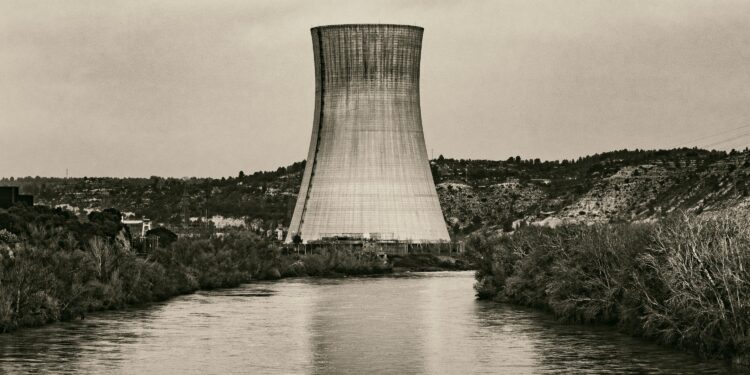The Revival of Nuclear Technology in China: Implications and Insights
As the global focus shifts towards sustainable energy solutions and cutting-edge technological advancements, a surprising comeback of an outdated nuclear technology from the United States is generating significant interest and discussion. Once dismissed as a remnant of the Cold War, this neglected approach is being rejuvenated in China, which is rapidly establishing itself as a leader in the nuclear energy sector. With the world facing an urgent need for cleaner energy alternatives, this development not only underscores changing trends in technological progress but also prompts critical discussions regarding nuclear safety, environmental consequences, and international competitiveness. This article delves into the ramifications of this revival by exploring its technological innovations, geopolitical implications, and environmental considerations.
Reviving Nuclear Legacy: China’s Innovative Approach to Old Technologies
In recent years, China has embarked on an ambitious mission to reinvigorate legacy nuclear technologies that were once deemed obsolete—primarily focusing on systems that had been overlooked by U.S. developers. This revival emphasizes a strategic commitment to small modular reactors (SMRs), which are designed to offer improved safety features and operational efficiency. As global demand for cleaner energy sources escalates, these renewed technologies present promising opportunities for countries aiming to decrease carbon emissions while enhancing their energy autonomy. The key advantages associated with this resurgence include:
- Improved Safety Mechanisms: Contemporary designs integrate advanced passive safety protocols.
- Lower Environmental Footprint: SMRs generate considerably less nuclear waste compared to traditional reactors.
- Economic Viability: Optimized manufacturing techniques lead to shorter construction timelines and reduced costs.
Additionally, Chinese enterprises are heavily investing in research initiatives aimed at fostering innovation within this specialized field. A focused effort is underway to incorporate, along with other state-of-the-art technologies into nuclear operations—a clear indication of a shift towards modernization within the industry. Below is a table highlighting some prominent projects along with their expected contributions to China’s evolving energy framework:
| Name of Project | Description | Date Expected Completion | |
|---|---|---|---|
| Xiangshan One | Small Modular Reactor (SMR) | 2026 | |
| CZP1400 | Advanced Pressurized Reactor | 2025 | |
| TMSR-LF2 | Thorium Molten Salt Reactor | 2028 |
Global Policy Impact: The Strategic Ramifications of China’s Nuclear Resurgence
The revitalization of China’s nuclear capabilities through reintroducing previously abandoned U.S.-developed technologies marks a crucial turning point in international security dynamics. As Beijing enhances its nuclear arsenal’s sophistication,are likely poised for substantial changes . Nations may respond by adjusting their defense strategies or military postures , potentially leading toward heightened tensions or even an arms race within Asia-Pacific territories . Several factors influencing these developments include :
- < strong > Strengthened Deterrence :< / strong > Advancements made by China could act as deterrents against regional rivals , prompting reassessments regarding U.S commitments across Asia .< / li >
- < strong > Realignment Of Alliances :< / strong > Countries situated nearby might reevaluate existing partnerships , seeking security collaborations capable enough counterbalance rising Chinese influence .< / li >
- < strong > Technological Rivalry :< / strong > The United States may choose reinvestment into its own atomic capabilities or explore novel defense mechanisms aimed at preserving strategic equilibrium.< / li >
The repercussions extend beyond mere regional security concerns; they also compel nations worldwide toward addressing non-proliferation efforts alongside arms control treaties more vigorously than before . As China’s atomic prowess expands further , countries might advocate renewed dialogues surrounding global governance frameworks concerning nuclears emphasizing transparency measures alongside confidence-building initiatives . Potential outcomes could encompass :
| Resultant Outcome | Possible Consequences |
|---|---|
Strategic Response: Recommendations For The US Regarding China’s Nuclear Progression
As international security landscapes evolve due primarily due advancements witnessed within Chinese atomic technology sectors it becomes imperative that United States adopts multifaceted strategies addressing both immediate long-term challenges alike.< Strong Investing R&D efforts focused advanced reactor designs alternative energies can deter potential threats while promoting innovation safety standards alike.< Strong Additionally strengthening alliances nations share similar concerns about proliferation enhance collective security measures taken place forming new partnerships particularly Asian regions create united fronts countering implications arising from expanded capabilities exhibited by china. Furthermore engaging open dialogues negotiations pertaining arms control foster stable environments minimizing misunderstandings showcasing commitment peace efforts globally supplementing diplomatic approaches should involve improving missile defenses overall defensive capacities through actions such as:
- Upgrading early warning systems;
- Enhancing cyber defenses;
- Conducting military exercises emphasizing readiness;
The US can better position itself amidst rapidly changing landscapes involving nuclears ensuring national securities remain intact while maintaining balance power dynamics effectively navigating future uncertainties ahead .
Conclusion Remarks
Standing at crossroads where scientific advancement meets responsibility towards environment resurgence legacy-based reactor designs invites reflection cyclical nature progress achieved throughout history reminding us complexities intertwined legacies past raise pertinent inquiries concerning future production methods cooperation between nations involved exploring potentials revitalized tech balancing harnessing capabilities ensuring utmost levels safeguards paramount importance shifting landscape emerging once again collectively imperative learn lessons derived previous experiences embrace rigorous oversight promote constructive dialogues transcending borders ultimately choices made today shape tomorrow’s energetic realities.































